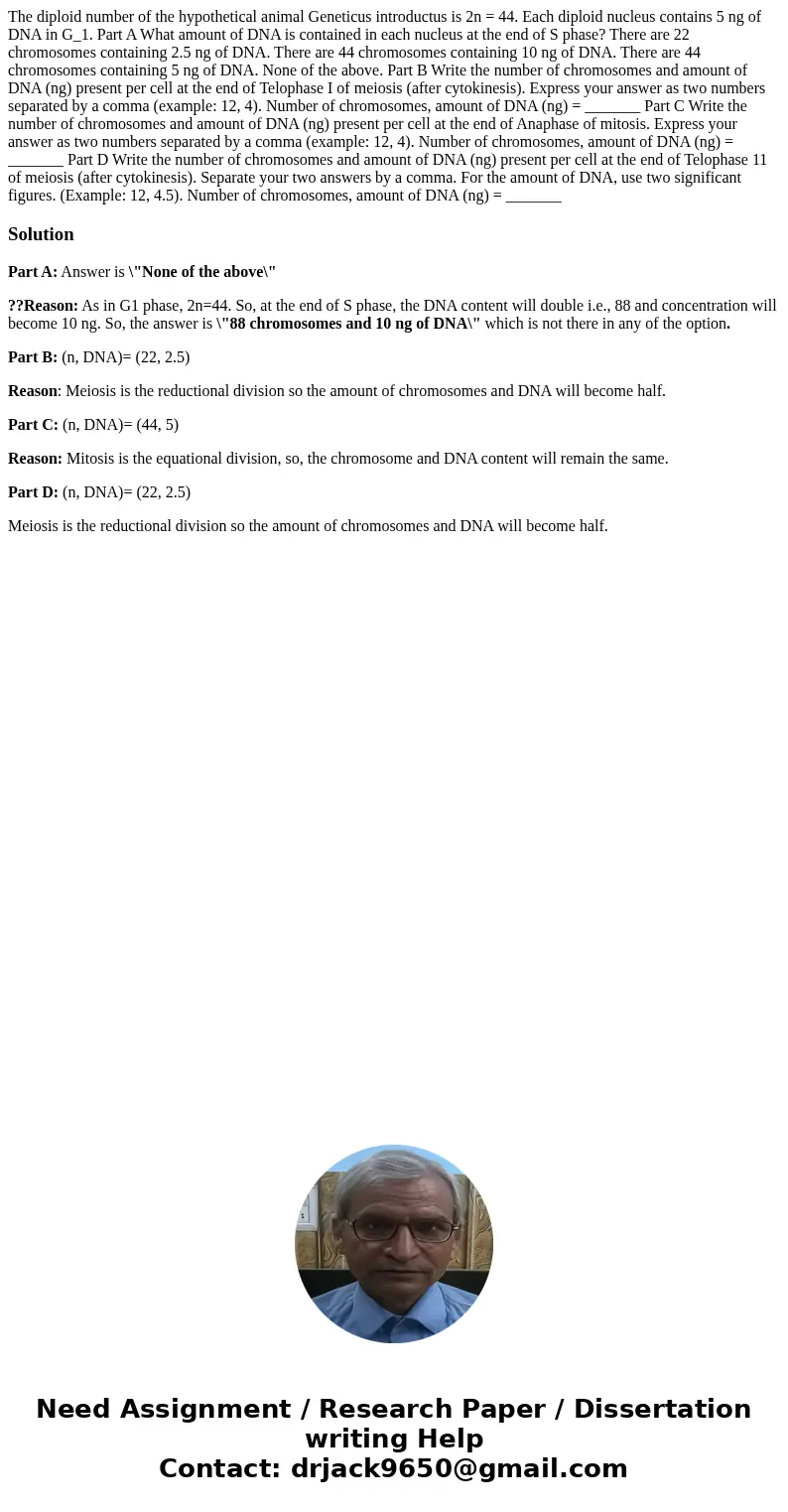The diploid number of the hypothetical animal Geneticus intr
The diploid number of the hypothetical animal Geneticus introductus is 2n = 44. Each diploid nucleus contains 5 ng of DNA in G_1. Part A What amount of DNA is contained in each nucleus at the end of S phase? There are 22 chromosomes containing 2.5 ng of DNA. There are 44 chromosomes containing 10 ng of DNA. There are 44 chromosomes containing 5 ng of DNA. None of the above. Part B Write the number of chromosomes and amount of DNA (ng) present per cell at the end of Telophase I of meiosis (after cytokinesis). Express your answer as two numbers separated by a comma (example: 12, 4). Number of chromosomes, amount of DNA (ng) = _______ Part C Write the number of chromosomes and amount of DNA (ng) present per cell at the end of Anaphase of mitosis. Express your answer as two numbers separated by a comma (example: 12, 4). Number of chromosomes, amount of DNA (ng) = _______ Part D Write the number of chromosomes and amount of DNA (ng) present per cell at the end of Telophase 11 of meiosis (after cytokinesis). Separate your two answers by a comma. For the amount of DNA, use two significant figures. (Example: 12, 4.5). Number of chromosomes, amount of DNA (ng) = _______
Solution
Part A: Answer is \"None of the above\"
??Reason: As in G1 phase, 2n=44. So, at the end of S phase, the DNA content will double i.e., 88 and concentration will become 10 ng. So, the answer is \"88 chromosomes and 10 ng of DNA\" which is not there in any of the option.
Part B: (n, DNA)= (22, 2.5)
Reason: Meiosis is the reductional division so the amount of chromosomes and DNA will become half.
Part C: (n, DNA)= (44, 5)
Reason: Mitosis is the equational division, so, the chromosome and DNA content will remain the same.
Part D: (n, DNA)= (22, 2.5)
Meiosis is the reductional division so the amount of chromosomes and DNA will become half.

 Homework Sourse
Homework Sourse